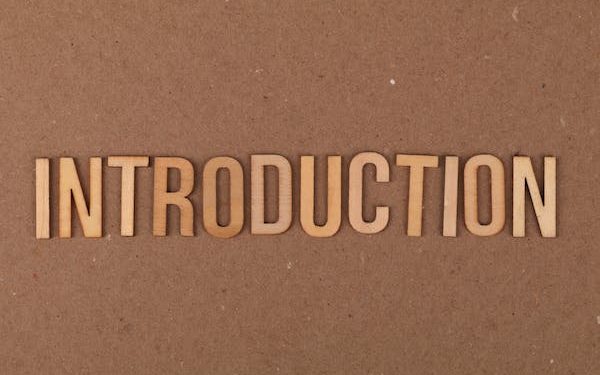No one will read your blog post –not even your wife will look at it with pity. Google will flush it down the pecking order like the product of your anus in the toilet. How does that sound provocative? That is one of the numerous ways to know the hook in the introductory sentence.
As a writer the introduction is a critical part of any writing. It is the first impression readers will have of your work, setting the tone for the rest of your piece. The introduction should be engaging and capture the reader’s attention, encouraging them to continue reading. One way to achieve this is by using a hook sentence.
A hook sentence is used at the beginning of an introduction that grabs the reader’s attention and keeps them interested in reading more. In this blog post, we will explore the different types of hook sentences and their effectiveness and provide tips for identifying the hook sentence in an introduction.
What is a Hook Sentence and how do you know it in the introductory paragraph?
A hook sentence is a sentence that grabs your reader’s attention and makes them want to read more. It is usually the first sentence or two of the introduction and is designed to intrigue the reader and encourage them to keep reading. A good hook sentence should be clear and concise, and it should relate to the topic of the article or essay. There are several types of hook sentences, including:
- Anecdote: A short story or personal experience that relates to the topic of the article or essay. An anecdote is a great way to engage your reader and make them feel connected to the topic personally. For example, “When I was a child, my dad used to take me on fishing trips to this stream. Little did I know that this same stream would become the focus of my research on microbes years later.”
- Question: A thought-provoking question that engages the reader and encourages them to think about the topic. A question can be an effective hook sentence because it makes your reader curious about the topic and encourages them to keep reading to find the answer. For example, “Have you ever wondered what the world would be like without Africa?”
- Quotation: A quote from a famous person, book, or article related to the topic. A quotation can be a powerful way to start an introduction because it can establish the piece’s tone and add credibility to the topic. For example, “As Mahatma Gandhi once said, ‘the best way to find yourself is to lose yourself in the service of others.'”
- Shocking statement: An unexpected or controversial statement that grabs the reader’s attention. A shocking statement can hook the reader but should be used sparingly and only when appropriate. For example, “Did you know that every day, 500,000 plastic straws are used in the United States alone, and most of them end up in our oceans?”
- Statistic: A surprising or exciting statistic that relates to the topic. Statistics can be an effective way to hook the reader because they provide a tangible example of the topic and make the reader curious about the rest of the article or essay. For example, “According to a recent study, more than 70% of Americans are not getting enough sleep, and it is having a major impact on their health.”
- Definition: A definition or explanation of a term or concept that is relevant to the topic. A definition can be an effective way to hook the reader by providing context for the topic and making the reader curious about the rest of the article or essay. For example, “Before we dive into renewable energy, let’s first define what it is. Renewable energy is the energy generated from natural resources replenished over time, such as wind, solar, and hydropower.”
Why is a Hook Sentence Important?
The hook sentence is important because it sets the tone for the rest of the article or essay. If the hook sentence is dull or uninteresting, the reader may lose interest and stop reading before getting to the main point. On the other hand, a well-crafted hook sentence can capture the reader’s attention and make them curious about the topic, encouraging them to continue reading.
A hook sentence can also establish the writer’s credibility and expertise. If you start with a powerful quotation or statistic, it shows that they have researched and are knowledgeable about the topic. This can increase the reader’s trust in the writer and make them more likely to continue reading.
Finally, a hook sentence can connect the reader emotionally to the topic. If you, as the writer, start with an anecdote or personal story, for example, it can make the reader feel like they are a part of the story and encourage them to keep reading to find out what happens next.
How to Identify the Hook Sentence in an Introduction
Identifying the hook sentence in an introduction is essential for understanding how the writer engages the reader. Here are some tips for remembering the hook sentence:
- Look for the first sentence or two: In most cases, the hook sentence will be the first sentence or two of the introduction. This is the writer’s first opportunity to grab readers’ attention and encourage them to keep reading.
- Consider the tone and style of the sentence: The hook sentence will often set the tone and style for the rest of the article or essay. For example, if the hook sentence is a shocking statement, the rest of the article may be written in a more controversial or provocative style.
- Ask yourself which sentence would make you want to read on: Asking yourself which sentence in the introduction would make you want to read on can help you identify the hook sentence. The hook sentence grabs the reader’s attention and makes them want to keep reading.
- Look for elements of the different types of hook sentences: The hook sentence may include aspects of the different types, such as an anecdote, question, quotation, shocking statement, statistic, or definition. Identifying these elements can help you understand why the hook sentence is effective and how it is trying to engage the reader.
Examples of Introductory Paragraphs with Hook Sentences
Let’s look at some examples of introductory paragraphs with hook sentences to understand better how hook sentences work.
Example 1: Have you ever been in a situation where you had to make a difficult decision? A decision that could potentially change the course of your life? This is the situation that John Smith found himself in when he was offered a job in another state. Should he take the job and risk leaving behind everything he knows and loves, or should he stay put and miss out on what could be a life-changing opportunity?
Analysis: The hook sentence in this introductory paragraph is the first sentence, which is a question. This question is effective because it immediately engages the reader and encourages them to think about their experiences with difficult decisions. The question also establishes the piece’s tone and sets up the following personal story.
Example 2: Plastic pollution is one of our most pressing environmental issues. Did you know that 8 million pieces of plastic make their way into our oceans daily? This plastic harms not only marine life but also threatens human health. In this article, we will explore the impact of plastic pollution on our oceans and what we can do to reduce our plastic use.
Analysis: The hook sentence in this introductory paragraph is the second sentence, which is a statistic. This statistic is effective because it provides a tangible example of the problem and emphasizes the issue’s urgency. Using a statistic, the writer establishes their credibility on the topic and shows that they have done their research. The hook sentence also sets up the rest of the article by clearly stating the topic and purpose of the piece.
Example 3: “Life is like a box of chocolates,” said Forrest Gump. But what if the box of chocolates was empty? That’s how many Americans feel when navigating the complex and confusing world of health insurance. In this article, we will explore the challenges of finding affordable health insurance and what you can do to make the process easier.
Analysis: The hook sentence in this introductory paragraph is the first sentence, which is a quotation. This quotation is effective because it is a famous and memorable line from a popular movie. Using a quotation, the writer establishes a connection with the reader, making them feel emotionally invested in the topic. The hook sentence also sets up the analogy between life and health insurance, explored in the rest of the article.
Conclusion
In conclusion, the hook sentence is a crucial component of any introduction. The writer’s first opportunity is to engage the reader, establish their credibility, and set the tone for the rest of the piece. Several types of hook sentences include questions, statistics, quotations, anecdotes, and shocking statements. By identifying the hook sentence in this introductory paragraph, readers can better understand the writer’s intentions and strategies to engage the reader.
When writing an introduction, it is crucial to take the time to craft a strong hook sentence. This may involve brainstorming ideas, researching statistics or quotations, or revising and editing multiple drafts. By putting effort into the hook sentence, writers can create engaging, informative, and memorable introductions.












Loved this post – heress my feedback –
ttypesofhooksentencesandhowtoeffectivelyusethemtocaptureyourreader%E2%80%99sattention.Thisarticleisextremelyhelpfulforanyonelookingtoimprovetheirwritingskills.Itprovidesvaluabletipsandinsightintotheimportanceoftheintroductionandhowtomakeitengagingandinteresting.Iappreciatetheauthor%E2%80%99shumorousapproachtothesubjectmatterasitmakesitallthemoreenjoyabletoread.Overall%2Cthisisawell-writtenandinformativearticlethatwillbenefitanyaspiringwriter.Greatjob%21
Thanks for reading , Love The Blog !!
An enlightening read. Thumbs up!